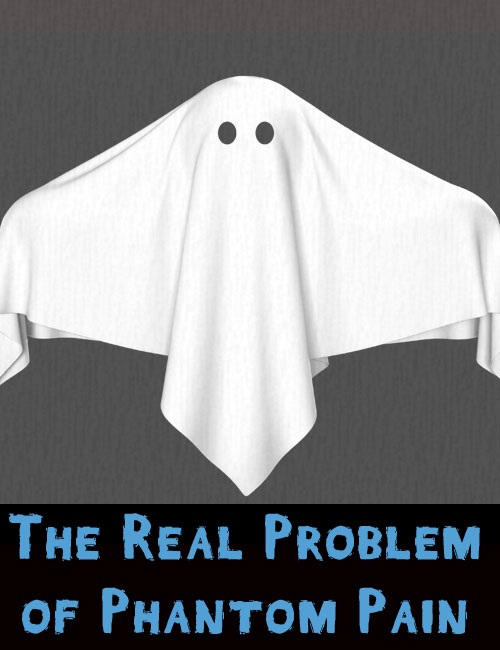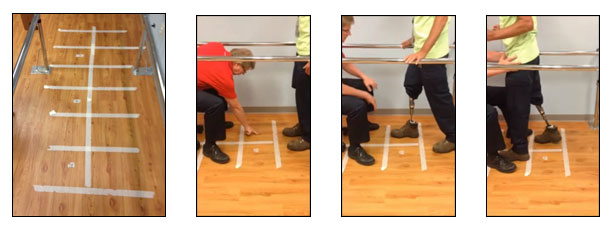|
Sylvester Jones: The Importance of Keeping a Sense of Humor
|
|
There is a lot to be said about humor and how it helps humans cope with difficulties in life. It can be used to break tension, make new friends and as a release from stress; that's why funny cat videos on YouTube go viral so often.
For Sylvester Jones, humor has helped him overcome an amputation that was the result of being dealt an unfortunate hand from birth.
When he was born, Sylvester was diagnosed with tibial hemimelia, a lower limb deficiency in which the tibia is partial or completely missing. In Sylvester's case, he did not have an ankle joint and only had the middle portion of his tibia, causing his left foot to turn inward toward his right foot. His doctors initially tried to save his foot, but when they realized there wasn't any bone there they amputated Sylvester's left foot below the ankle in April of 2002.
Unfortunately, this wasn't to be the only amputation Sylvester would endure. By the time he turned 13, Sylvester's knee was deteriorating because he didn't have any ligaments. After trying numerous options that didn't work, Sylvester and his family decided to have a knee disarticulation performed on August 5, 2014.
Sylvester has had to face a number of challenges, including making new friends since he missed so much school. That's where his positive attitude and sense of humor came into play. Keeping a sense of humor and a positive attitude are two things Sylvester said he would tell other amputees struggling with their life post-amputation. He said he has also learned the importance of patience and support from family.
Sylvester is a great example of how not losing your sense of humor and keeping your head up can positively affect recovery after an amputation. We're glad to have had the opportunity to meet and work with this extraordinary young man.
|
|
Phantom Pain: This is One Ghost that is all too Real
|
|
Ghosts, phantoms and apparitions are a common theme this time of year with Halloween right around the corner. However, there is one "ghost" amputees must deal with that is all too real: phantom pain.

Phantom pain is the sensation, ranging from painless to excruciating, amputees feel in their amputated limbs. For example, a below-the-knee amputee may have times where it feels like they still have a foot. Optimus Patient Advocate Aimee Eckert, herself an amputee, said the sensation is different for every amputee.
"No one amputation is the same therefor every amputee will experience different nerve sensations," she said. "Depending on the level of amputation, (above knee, below knee, above elbow, below elbow) will determine where the phantom limb pain is felt."
While some amputees may have little to no pain, phantom pain can be excruciating and unbearable for others. How is this possible?
What causes phantom pain?
Many experts think that when a part of the body is lost, the brain gets mixed signals. For example, after an amputation, the brain and spinal cord no longer receive sensory information from the amputated limb. These mixed signals can trigger the most primal message in the body that something is not right: pain.
Scientific studies have also shown evidence that the brain remaps your body's circuits after an amputation. If you lose your right foot, the sensory information from it may be pushed elsewhere in your body, like your right shoulder. When your shoulder is touched, it feels as though your right foot is also being touched. Other factors such as damaged nerve endings, scar tissue at the amputation site and even physical memory of pre-amputation pain in the limb are thought to contribute to phantom pain as well.
Dealing with phantom pain
There are numerous ways to help relieve phantom pain, some invasive and some non-invasive. Nerve blocking meditation, mirror therapy and massage are a few non-invasive ways to alleviate phantom pain.
The passage of time can help phantom pain deteriorate as well, a good sign for any new amputees trying to work through phantom pain. If you are dealing with phantom sensations and pain, let your Optimus practitioner know as they can help recommend ways to ease the pain.
|
|
Margaret Rodgers: Have Faith
|
|
Faith is defined as "a complete trust or confidence in someone or something." You can have faith that a friend will pick you up from the airport after you've been out of town, faith that a coworker will hold up on their end of a project, or faith that a family member will make the best decision. However, there is another kind of faith that Margaret Rodgers has used to work through her amputation: spiritual faith.
Margaret's amputation was the result of a fall that broke her left femur. The break was complicated by a MRSA infection, an infection that can lead to complications and sometimes be life threatening. Margaret had already had a full left knee replacement, and after months of therapy and seeing different doctors, the decision was made to amputate her left leg.
In the time since her amputation, Margaret faced a common obstacle in lower limb amputees: having the confidence to leave her house knowing she couldn't walk with both legs. After she conquered leaving the house, it was going to therapy without being able to use both legs. Her current challenge is walking with her prosthetic leg to get everywhere. However, her support system of family, friends and faith gave Margaret the confidence to keep going.
"Asking and praying to the good Lord above for the strength everyday so I get up and walk again without the walker/cane again and able to hold my great grandchildren again," is what Margaret cites as her motivation to keep a positive attitude. She said she's learned numerous lessons, such as patience and continuing to strive toward progress even when conditions aren't the best. This will serve Margaret well in her quest to walk without a walker or a cane.
She also said the help of the Optimus staff has been essential to her progress so far.
"[Optimus employees] show that they care about their patents," Margaret said. "They listen to what you have to say, and if you have any problems with your prosthetics they will do their best to fix it."
Margaret has been a pleasure to work with so far and we look forward to continuing our relationship with this remarkable woman.
|
| Prosthetic Stance - Sound Limb Stepping |
 | | Jim Scharf, PTA |
The goal of "Jim's Corner" is to provide helpful information and be a resource for those helping patients fitted with prosthetics learn to use them correctly in order to enjoy a better quality of life as an amputee.
Last month, we looked at improving the patient's prosthetic stance with their sound limb stepping. It is not uncommon for patients to struggle with learning this, so this month we are going to look at a drill that I like to use to aid in the learning process.
I start by making a grid out of tape on the floor. The purpose of this grid is to give the patient a "target" to aim for. The grid will form boxes that are a little larger than the patient's shoe size.
To start, have the patient stand up with both feet under them forming a good base of support at the first tape marker, the "starting line." From the standing position at the "starting line," have the patient place their prosthesis out into the first box and keep it there. Then the patient is to step forward with their sound limb into the second box. As the patient starts to step forward it may be beneficial to cue the patient to "pull back," meaning they need to pull the residual limb backward underneath and behind them and don't stop "pulling back" until the sound limb contacts the floor and they transfer their weight onto the sound limb. Then return back to the "starting line" to keep repeating. Be very careful with stepping backward for some prosthetic knees might be ready for stance disengagement and may buckle.
Achieving terminal stance with residual limb extension is a key here. The patient is to keep repeating until they can demonstrate good technique. You may have to start with manual assistance and cuing. As they continue to progress, have them preform the drill actively and then resisted.

Jim Scharf, PTA, Prosthetic Assistant/Gait Specialist
Jim has been a Licensed Physical Therapist Assistant since 1988. Jim has worked with lower extremity amputee patients throughout his career. He serves as a Gait Specialist and Liaison when prosthetic patients are meeting with their therapists. Feel free to contact Jim if he can assist you in any way at:jscharf@optimusprosthetics.com.
|
|
|
 |
 |
D = Dayton Area
C = Columbus Area
Course #1
No courses scheduled.
Course #2
D- Clinton Memorial, 12 p.m., 10/3
Course #3
D- Atrium, 8 a.m., 10/13
D- Pinnacle Point, 12 p.m., 10/15
D- Crossroads, 12 p.m., 10/15
D- Soin, 12 p.m., 10/16
D- Atrium, 12 p.m. 10/24
D- Hospitality Home of Xenia, 12 p.m., 10/27
Course #4
D- Oaks of W. Kettering, 12 p.m., 10/6
C- Regency Hospital, 12 p.m., 10/7
C- McNaughten Pointe, 12:30 p.m., 10/28
D- Astoria, 12 p.m., 10/29
Course #5
D- Atrium, 12 p.m., 10/13
C- Laurels of Norworth, 12 p.m., 10/14
D- Southview, 12:15 p.m., 10/31
Course #6
D- Miami Valley Rehab, 12:30 p.m., 10/22
C- Mt. Carmel Home Health, 8:30 a.m., 10/28
Course #7
D- Kingston of Miamisburg, 12 pm, 10/2
Course #8
D- Bethany Village, 12:15 p.m., 10/8
D-Carriage Inn, 12 p.m., 10/30
Course #9
D- Sanctuary of Wilmington, 12pm, 10/1
D- Wayne Hospital Rehab, 12pm, 10/10
C- St. Ann's Hospital Rehab, 12 p.m., 10/16
D- Kindred of Lebanon, 12 p.m., 10/23
Course #10
D- Shiloh Springs, 12 p.m., 10/9
|
|
 |
|
Optimus Prosthetics, Dayton
8517 North Dixie Drive, Suite 100/300
Dayton, Ohio 45414
(937) 454-1900
Optimus Prosthetics, Columbus
3132 Olentangy River Road
Columbus, Ohio 43202
(614) 263-LIMB (5462)
|
|
|
|
|
|
|
Copyright © 2013. All Rights Reserved.
|
|
|
|